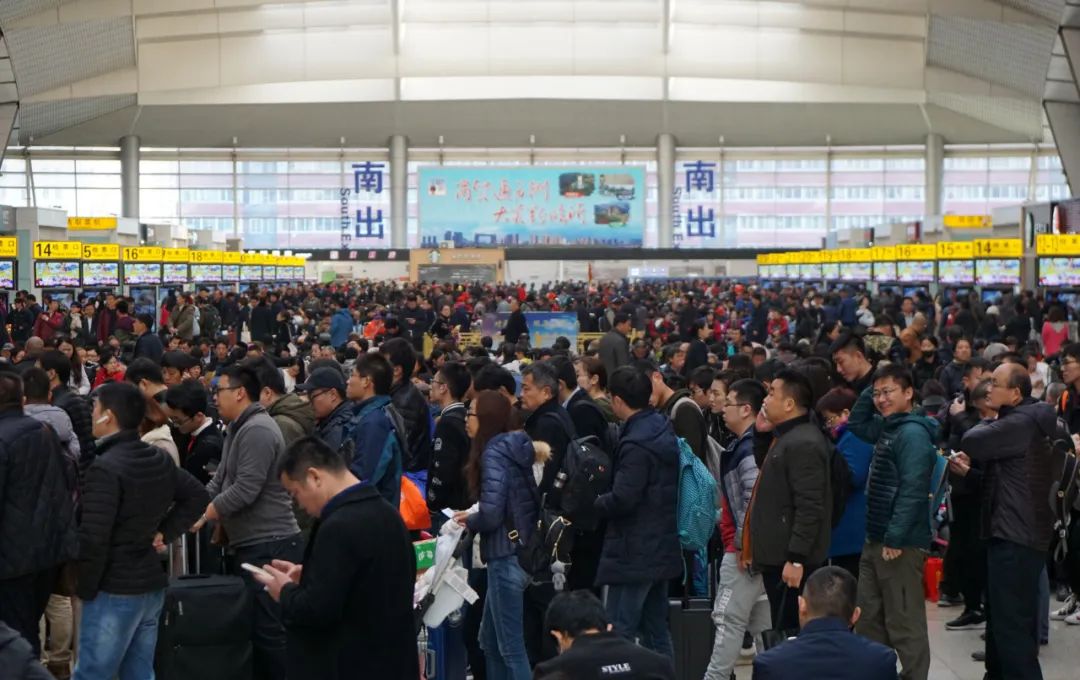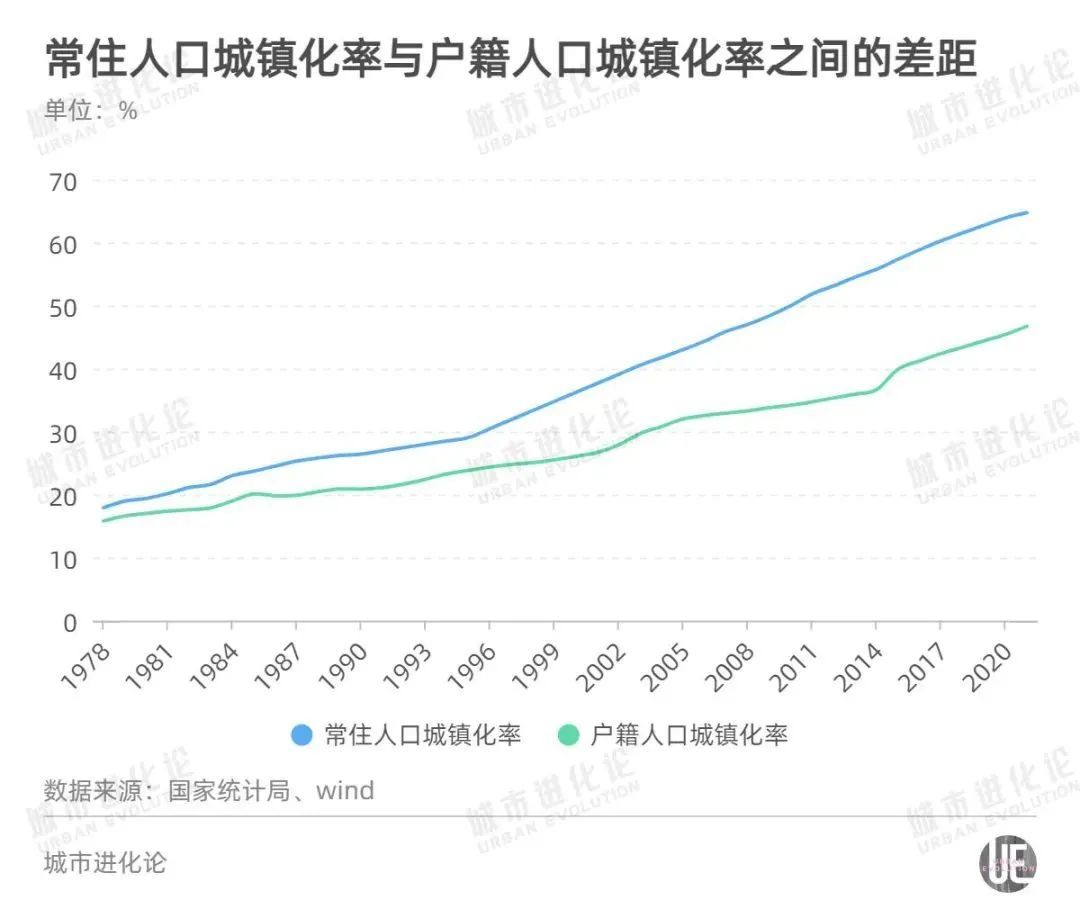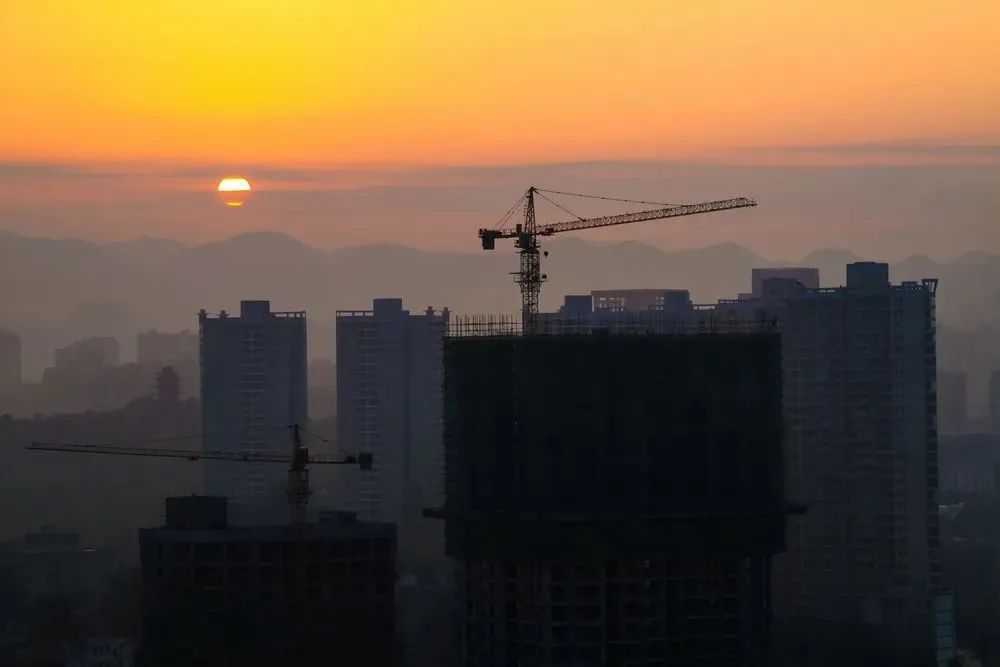More than 200 million people live in cities and towns, but there is no urban hukou, and the country has proposed the goal
Author:Daily Economic News Time:2022.07.13
In 2021, the urbanization rate of the permanent population in my country reached 64.72%, and the level of urbanization has steadily increased. A new problem has attracted much attention: urbanization has entered the second half, and the growth rate has slowed down. Searching?
The urbanization rate of household registration has become a new concern. In 2021, the urbanization rate of my country's household registration population was only 46.7%. How to span more than 18 percentage points between the two is the key and core of improving the quality of urbanization.
The "Fourteenth Five -Year Plan" New Urbanization Implementation Plan (hereinafter referred to as the "Plan"), which was announced on July 12, mentioned that when setting the main goal of 2025, it was mentioned that while "the national resident population urbanization rate has steadily increased", while the national permanent population urbanization rate has steadily increased ", while, while the national resident population urbanization rate has steadily increased", while, while the national resident population urbanization rate has steadily increased ", while, while the national resident population urbanization rate has steadily increased", while, while the national resident population urbanization rate has steadily increased ", while, while the national resident population urbanization rate has steadily increased", while, while the urbanization rate of permanent resident population has improved steadily. " "The urbanization rate of household registration has increased significantly", and "the gap between the urbanization rate of household registration and the urbanization rate of permanent resident population has narrowed significantly."

Photo source: Photo Network_500746398
It is necessary to increase the urbanization rate of household registration, and it will involve deeper reform of institutional mechanisms. The "Plan" proposes a series of existing issues: for example, the reform of the household registration system and its supporting policies have not yet been fully implemented, the urban agglomeration system and mechanism of the urban agglomeration system is not complete, and the development of large and medium -sized cities is insufficient.
Under the new goal, the construction of new urbanization is entering the "deep water zone". For example, Feng Kui, deputy director and researcher of the Central Economic Commission of the Democratic League, said that improving the level and potential of the "14th Five -Year Plan" urbanization and potentials need to further increase reforms, and in migrant workers civicization, urban system construction, urban governance, urban and rural integration, etc. In the field, there are many systems and mechanism issues, which need to touch some laws, regulations, systems, and policies.

Narrowing the gap
Since 1978, my country's resident population has increased from 172 million to 914 million, and the urbanization rate has increased from 17.9%to 64.72%, and the number of cities has risen from 193 to 685 at the end of last year.
However, in the eyes of many people, the level of urbanization in my country is only a "half -cut" urbanization -a significant "paradox" it is facing is between the urbanization rate of the resident population and the urbanization rate of the household registration population. "Honggou".
This means that a large number of migrants are "wandering" between urban and rural areas, causing their daily living and living space to be separated from the location of the household registration, nor can they enjoy the same welfare treatment as urban residents.
To this end, as early as 2012, the report of the 18th National Congress of the Communist Party of China proposed that "accelerate the reform of the household registration system, orderly promote the citizen of agricultural transfer population, and strive to achieve the full coverage of the basic public services of urban and towns." New types of urbanization have been continuously promoted, and "the primary task of promoting the orderly realization of civicization as urbanization in order" is also constantly emphasized.
The "National New Town Urbanization Plan (2014-2020)" issued in 2014 will further clarify the relevant goals: by 2020, "the urbanization rate of the permanent population will reach about 60%, the urbanization rate of the household registration population will reach about 45%, and the household registration population cities and towns The gap between the urbanization rate of the permanent resident population is reduced by about 2 percentage points, and strive to achieve about 100 million agricultural transfer population and other resident population settled in cities and cities. "
It should be said that the promotion effect is significant. The target of over 100 million agricultural transfer population and other permanent population has successfully achieved the target of urban settlements, and the threshold for urban settlements has also dropped again. In addition, compared with the data of 2012 and 2020, the urbanization rate of the permanent population in my country increased from 53.1%to 63.89%, and the urbanization rate of the household registration population increased from 35.33%to 45.4%, which all reached the previous preset goals. However, the gap between the two indicators expanded from 17.77%to 18.49%, and failed to achieve the "reduction of about 2 percentage points" expectations.
In fact, with the continuous advancement of urbanization, the gap between the urbanization rate of the permanent population and the urbanization rate of the household registration population has been expanding.

During the "Thirteenth Five -Year Plan" period, the urbanization rate of permanent residence in the country increased from 58.84%in 2016 to 63.89%in 2020, and 5.1 percentage points in five years; compared To 45.4%, an increase of 4.2 percentage points. The gap between the two expands from 16.15 percentage points to 18.49 percentage points.
For data estimates in 2020, about 260 million people across the country live in cities and towns, but there is no urban hukou. How to continue to reduce the gap between the urbanization rate of permanent population and the urbanization rate of the household registration is still a important issue.
The "Plan" also clearly mentioned that it is necessary to adhere to the priority of promoting the citizen of agricultural transfer population as a new type of urbanization. The quality of population citizen.

Optimization pattern
Wang Kai, the dean of the China Urban Planning and Design Institute and the master of the national engineering survey and design, previously revealed to the uncle Cheng that compared with the "National New Urbanization Plan (2014-2020)" and the latest "National New Urbanization Plan (2021-2035 2035 2035, 2035, 2035 ) ", The focus of the previous round of planning in space is mainly to build a urban group with excellent urban systems and complementary functions. The new highlight of this plan is to specifically propose "the coordinated development of large, medium and small cities and small towns", and specially supplemented "urbanization construction with county seats as an important carrier: supplementing shortcomings and weaknesses, local urbanization."
Tang Jiqiang, the CEO and Chief Economist of the Western Finance Tank of Southwest University of Finance and Economics, believes that the inherent logic of the "Plan" is actually allocating resources based on human flow. Under the new trend, improving the level of urbanization of the household registration population will inevitably mean the continuous optimization of the urbanization spatial pattern.
The "Plan" promotes the construction of the "urban agglomeration and urban circle as a coordinated development system for promoting large, medium and small cities and small towns", and also provides optimization directions and "problem solving ideas" from multiple dimensions.
Earlier, the national "Fourteenth Five -Year Plan" outline proposed that the restrictions on settlement restrictions from individual large cities will be relaxed, and the registered household registration system is tried to comprehensively cancel the restrictions on the settlement of cities under 3 million in cities in the urban area. Type -5 million large cities in large cities settled in. The "Plan" was confirmed again.
How to let these cities live in a pool of "spring water", where the residential population is urbanized? The urban circle is an important starting point.
In this "Plan", the scope of cultivation and development of the urban circle has been expanded to "large -scale cities with a large and large -scale cities and large radiation driving capabilities", and proposed the preparation and implementation of the urban circle development planning and special fields of key areas. In a sense, the metropolitan area has become a key position for promoting the reform of the household registration system.
One prominent example is that in the "Plan" proposed to promote the moderate separation of economic management authority and the scope of the administrative division, establish a cross -administrative district interest sharing and cost sharing mechanism, the urban circle has become the first to promote unified planning and implementation of planning, unified management of land, population and other unified management management. location.
Further, the population will also achieve new dynamic balance between various cities. According to the "Plan", it is to promote non -core functions of the central urban area of Super Special City, improve the quality of large and medium -sized cities, vitality of small cities, and county seats as an important carrier.
As the county town of "Chengtou Township", it is another pole that emphasizes the "Plan".
In the view of Wang Guangzhang, a part -time professor and doctoral instructor of Tongji University, with the profound changes in the internal and external environment and conditions, my country's urbanization has entered a new stage of transformation and development based on improving quality. It will become an important urban carrier that achieves two -way free flow and public resources in the next stage.
Tang Jiqiang also pointed out that the "Plan" highlights the promotion of urbanization construction with county seats as an important carrier, which is an optimization for urban governance costs, governance efficiency, and governance structures; secondly Urbanization.
There are more than 1,800 counties and county -level cities that are distributed in the country, with about 250 million people, which has great potential for attracting the local population to be near the urbanization. The "Plan" also proposes that a number of county -based county -based counties will be selected, and the shortcomings and weaknesses are made to make up for shortcomings according to local conditions, enhanced the comprehensive carrying capacity, and "meet the needs of farmers to get employment in the county."

Match resources
But resistance still exists. Li Tie, the former director of the Independent Economist, the former director of the reform and development center of the Chinese city and the small town, has analyzed that some cities have not been settled in large -scale liberalization, which may be considered by the government for public service supply capacity and financial pension payment capabilities. Increasing the supply of resources and liberalizing settlement will trigger dissatisfaction with the population of the local household registration, bringing the instability of society.
The "Plan" further reforms the system and mechanisms of urban development and governance is "surgery" to the problem of not matching resources.

Photo source: Photo Network_500412778
A representative problem is reflected in land use. Fan Jie, deputy dean of the Science and Technology Strategic Consultation Research Institute of the Chinese Academy of Sciences, pointed out that waste of land in urbanization is an extremely common and very serious phenomenon. A contradiction caused by this is that the supply of land seems to be unsatisfactory to the current large -scale urbanization, and the contradictions of human and land are more prominent.
Take Shenzhen as an example. According to data in 2020, Shenzhen's residential land accounted for 22.6%of the city's total construction land, far lower than the lower limit of 25%to 40%of the relevant national standards. Tastest land use is difficult to meet the local growing housing demand.
Faced with this problem, Shenzhen, as a pilot of comprehensive reform, puts attention to inefficient industrial land. In the exploration task of "increasing the use of industrial land", Shenzhen proposed to promote the mixed land for the second and tertiary industries and revitalize the existing industrial land.
How much room can this bring to Shenzhen? According to the "Shenzhen Municipal Land and Space General Plan (2020 ~ 2035)" announced last year, in the next 15 years, Shenzhen's low -efficiency land development scale will be not less than 170 square kilometers.
The "Plan" continues similar ideas, and proposes to "promote reasonable conversion of the types of land in different industries, explore the supply of mixed industries and composite functions", and "encourage localities to improve the change of the purpose of the use of the inventory of the existing construction land in the city and the village in the city". " Focus on focusing on "improving the efficiency of construction land" and promoting more cities on the road of smart growth.
As for the shortcomings of medical and education resources, the issue of "human -land and money linked" previously called on the "Plan" was also arranged.
On the one hand, let the city have enough room for development. It is reflected in the formulation and revision of land and space planning, "fully consider the population scale factors, especially the number of people entering the city, scientifically calculates and reasonably arrange the scale of new construction land in cities and towns, and prefer the construction and guarantee of compulsory education school buildings in regions of the population concentration. Requirements for housing construction land. On the other hand, let the indicators go with others. For example, for education issues, Feng Kui analyzed that the foreign population poured into some large cities, but it was difficult to provide sufficient "degree" in a short time. Essence
In this regard, the "Plan" responded one by one: For the preparation, it will promote "adjusting the flow of population in the region of the area according to the actual population flow, and increase the degree supply of the population in the compulsory education stage of the urban compulsory education." For financial issues "Improve the citizen of civicization of the central and provincial fiscal agricultural transfer population" and "increase the weight of the central and African resident population in the central and African household registration population".
Reporter | Yang Danfei Dan Zhongkui
Edit | Liu Yanmei Lu Xiangyong Du Hengfeng
School Division | Cheng Peng
| Daily Economic News nbdnews original article |

Reprinting, excerpts, replication, and mirroring are prohibited without permission
Daily Economic News
- END -
Eye ills are lost, and the police warmly send it home

Jimu Journalist Zhang LijingCorrespondent Hao Chuanqi Huang PayneThere is a dad in...
Are these powder poisonous?The children are looking for the secret of the butterfly in the Yuehu Lake

The Yangtze River Daily Da Wuhan client July 17th. The summer heat is hit, and the...